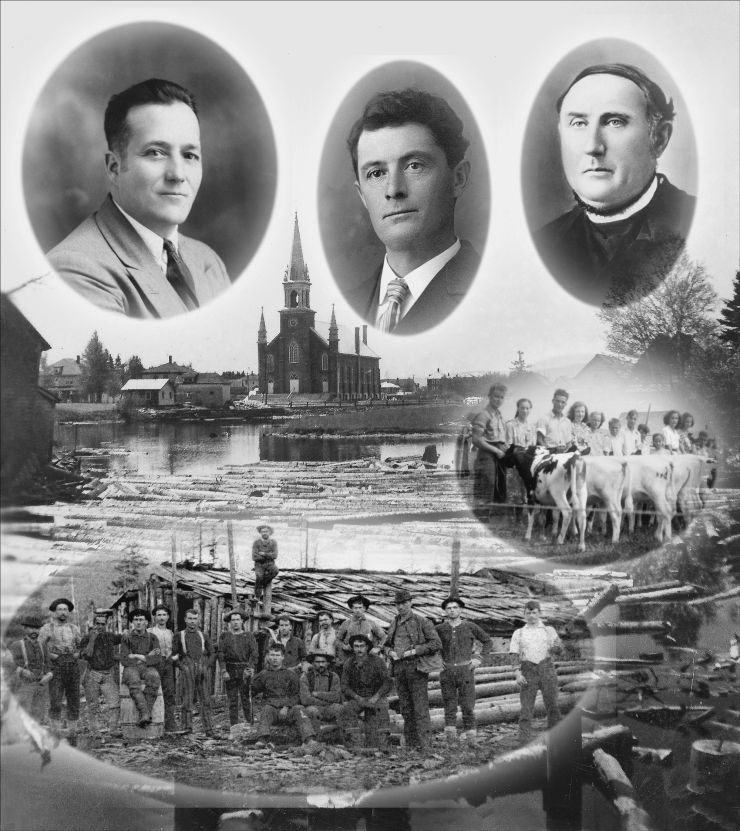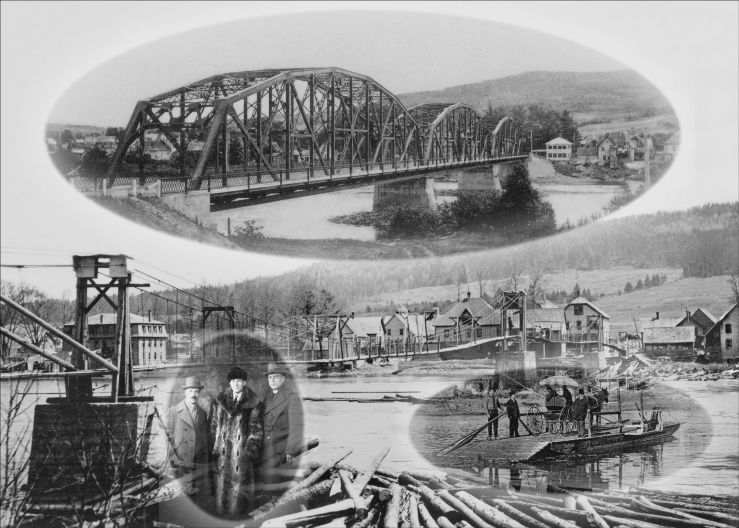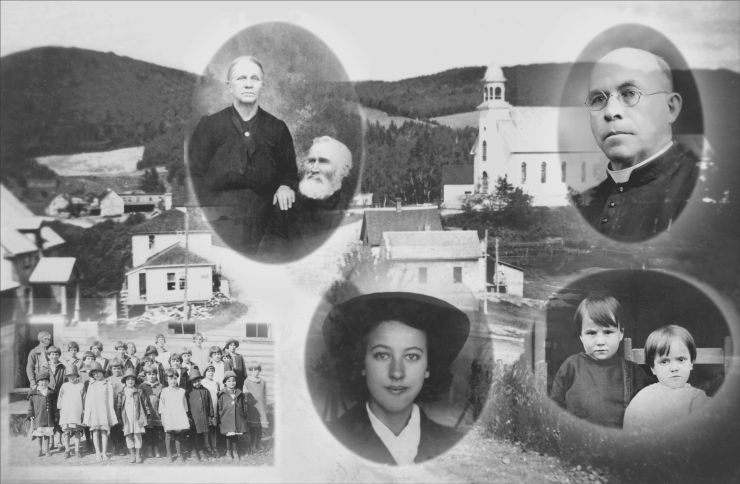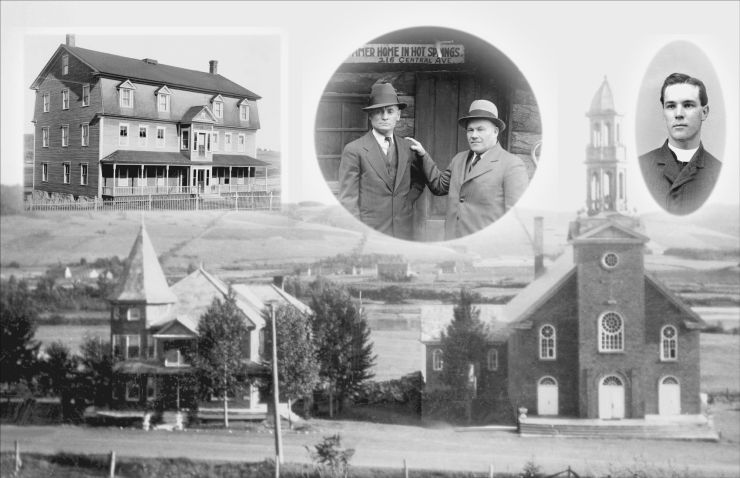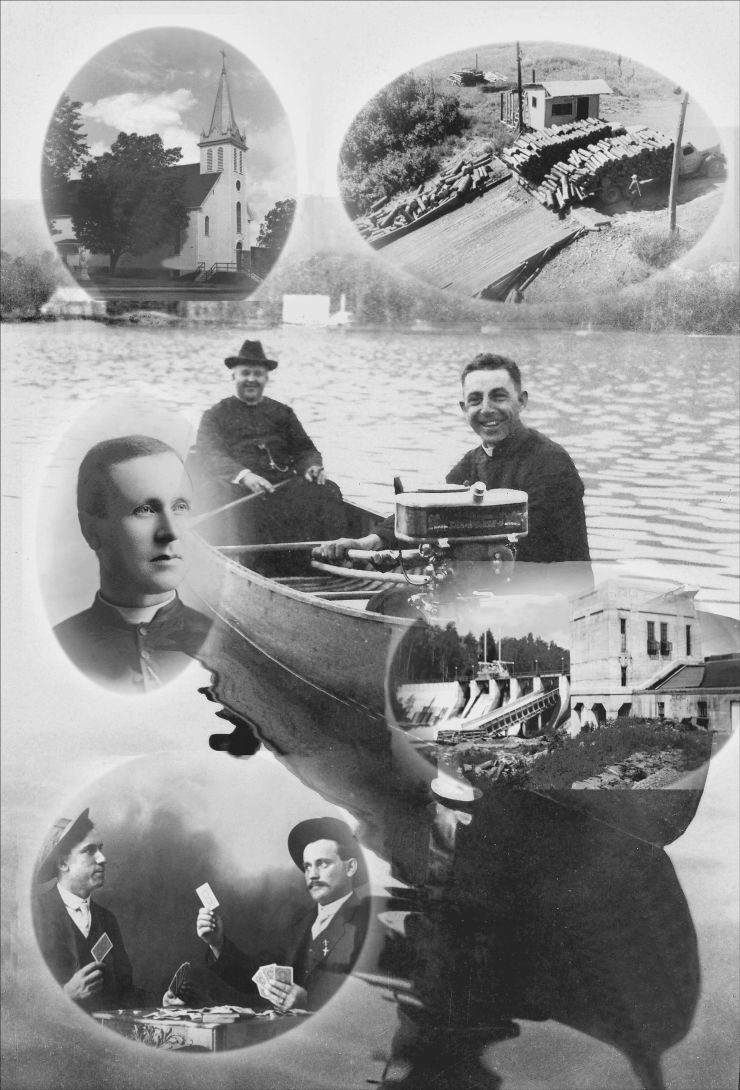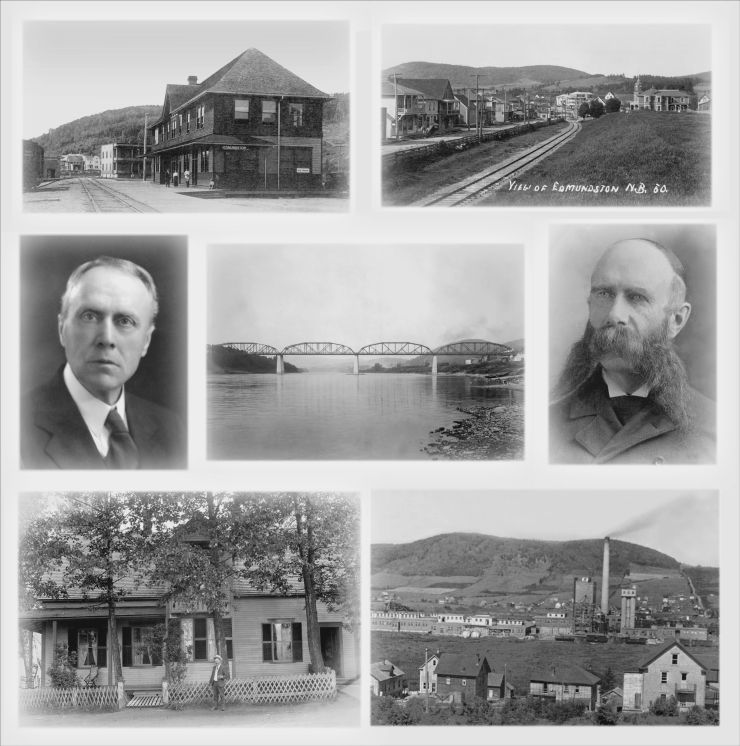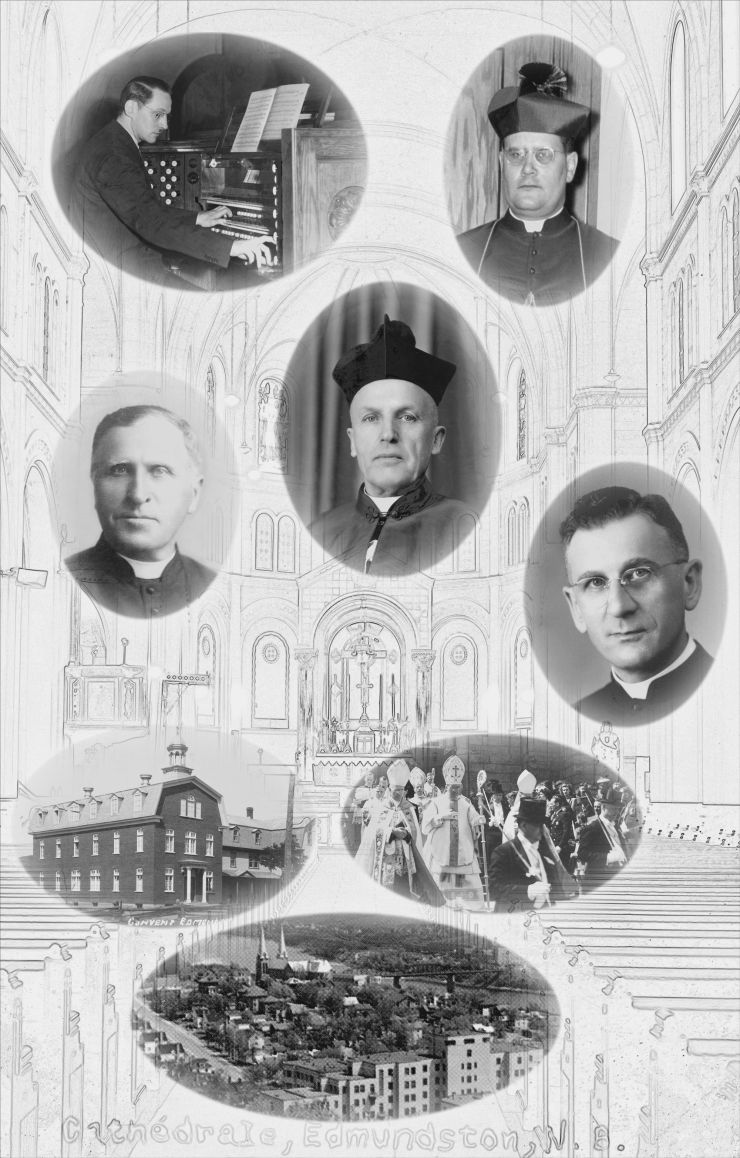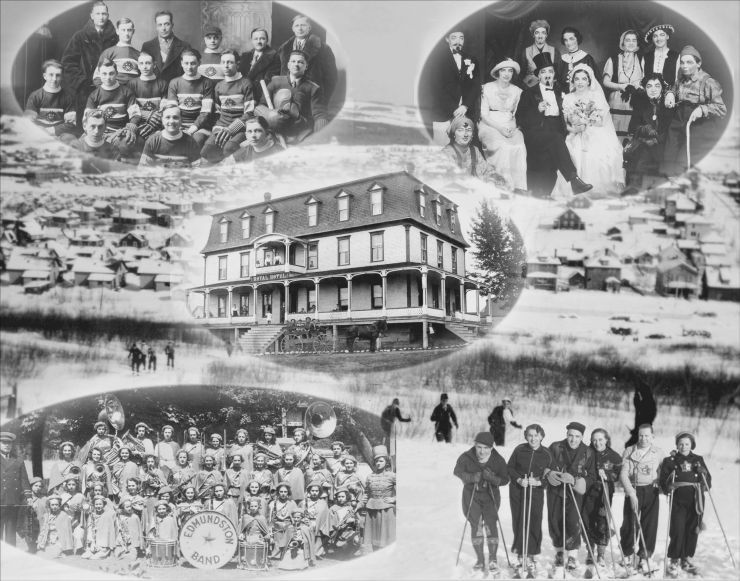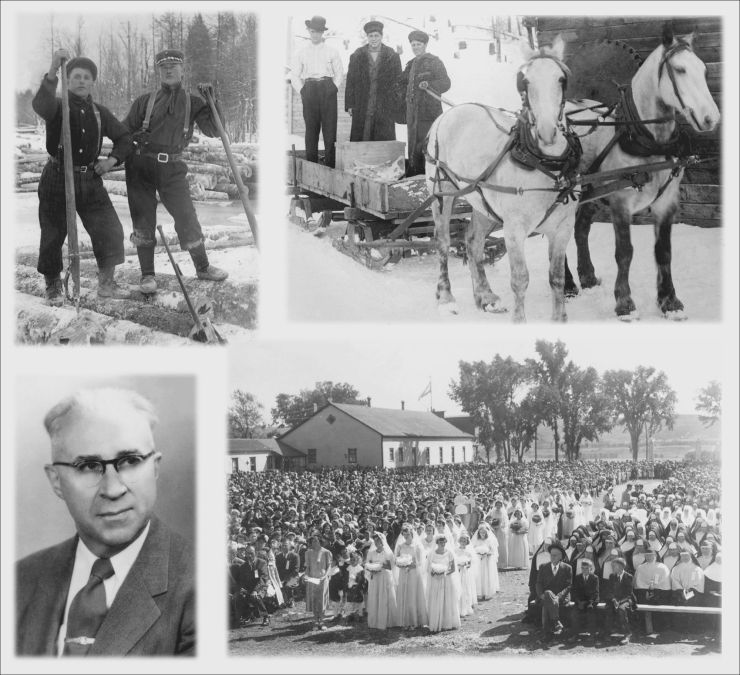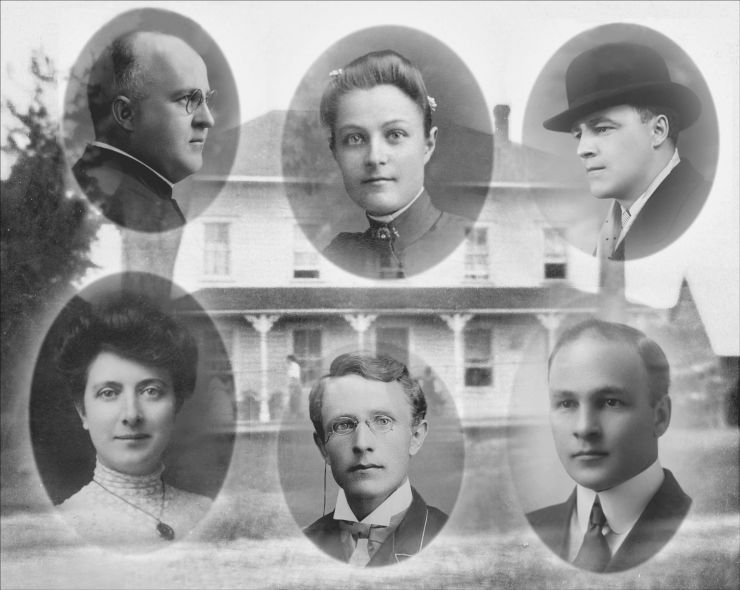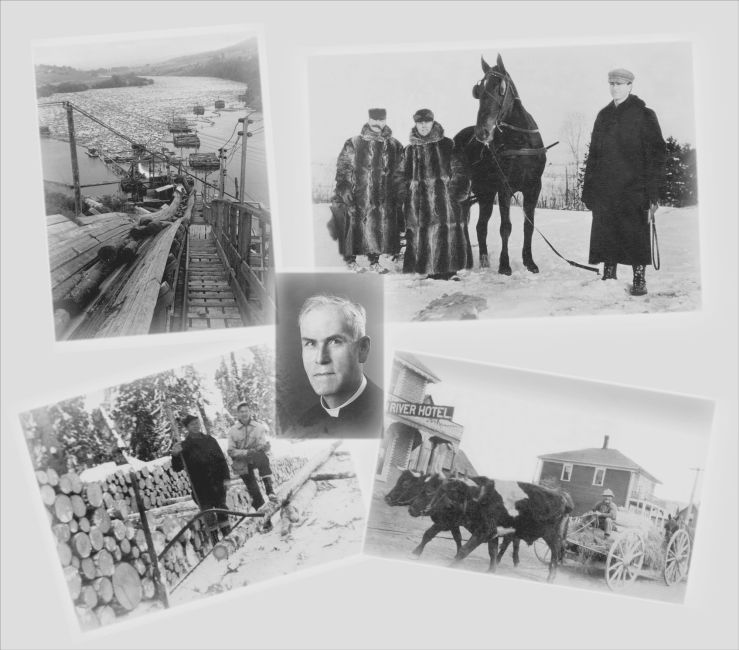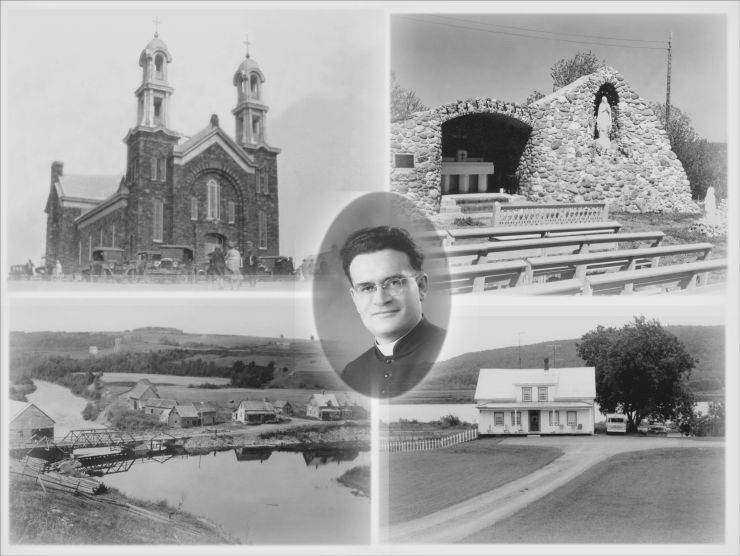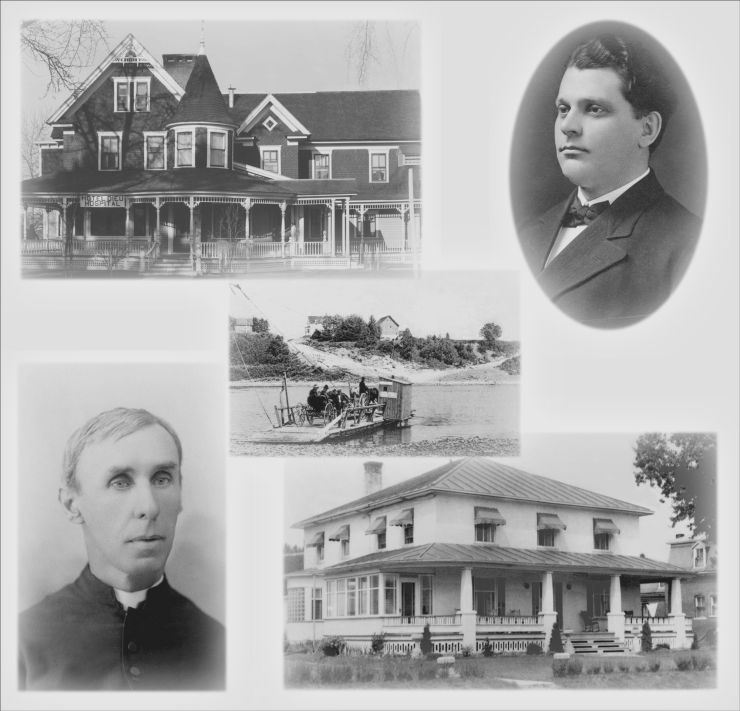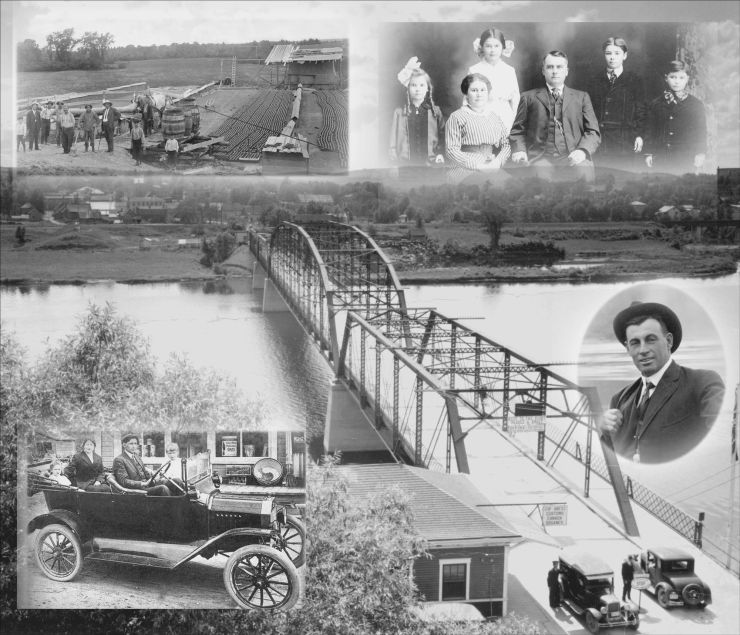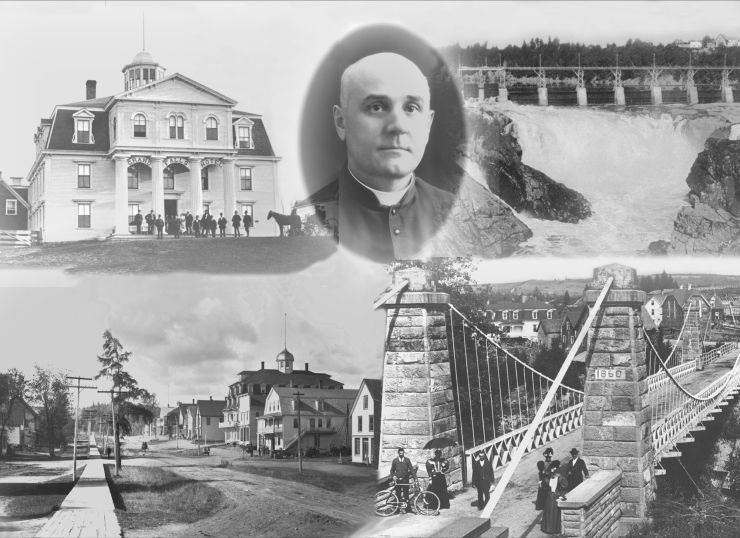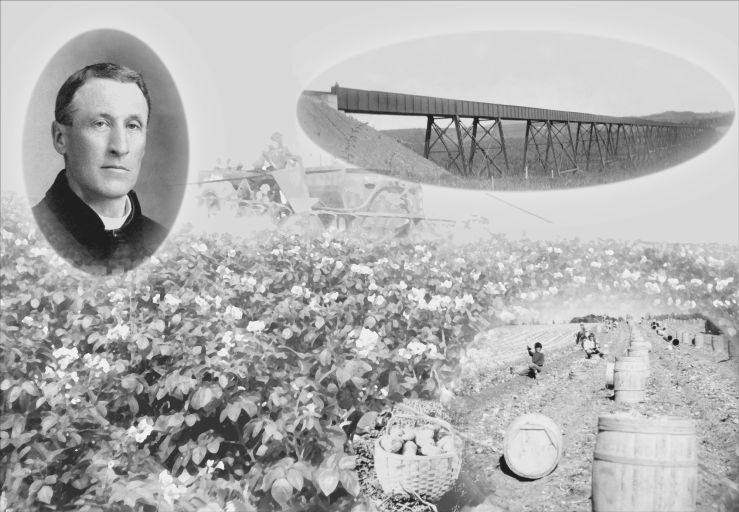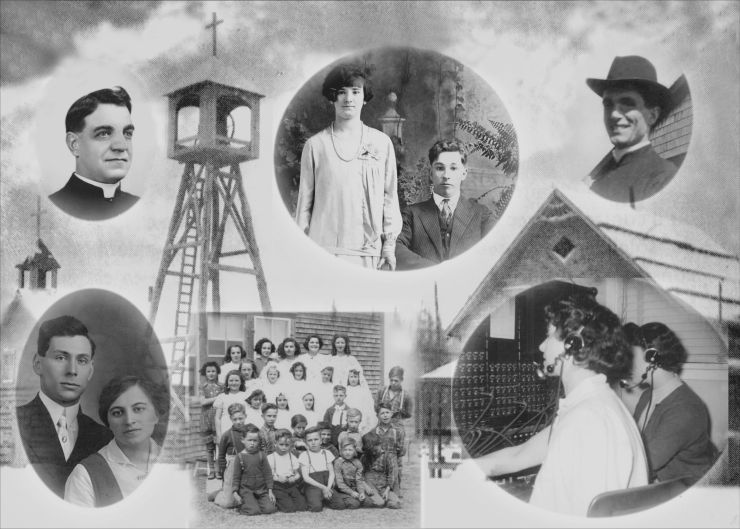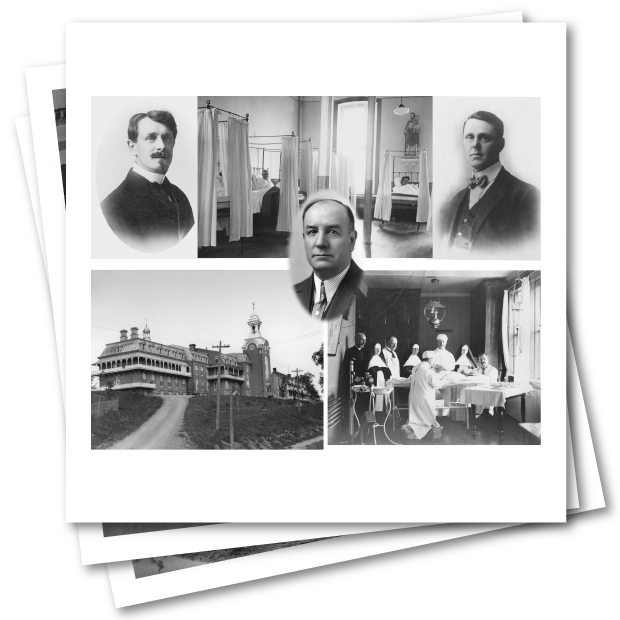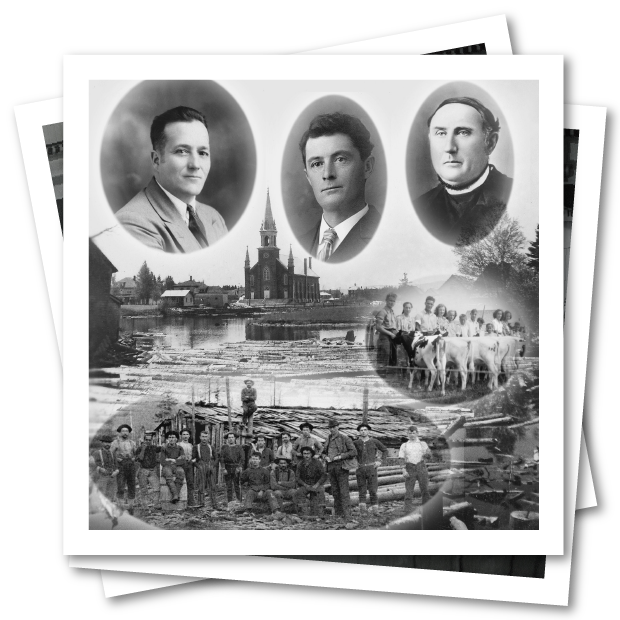Exhibition – Sense of belonging to Greater Madawaska
Gallery 2: Sense of belonging and taking roots into Greater Madawaska (1860-1960)
Introduction
The descriptions of the 502 photos brought together in this exhibition take into account the geographical, historical, economical, religious, social and cultural contexts. There are 17 groups of photos illustrating the life of people in the parishes, towns and villages of New Brunswick and of places located across on the other side of the St. John River, in the state of Maine. Each category or section in the gallery of photos contains an average of thirty photos.
Collections of photos
A first selection of 295 photos was made from the collection left by Father Louis Armand Martin, a priest who retired at Hôtel-Dieu, Saint-Basile. Have been included in the exhibition, 92 photos borrowed from the Société historique du Madawaska and the CDEM (Centre de documentation en études madawaskayennes), and 115 photos that were lent by people interested in family history and their cultural heritage.
Definition of Greater Madawaska
Located in north-western New Brunswick and on the north side of the St. John River, Greater Madawaska covers all of Madawaska County, the northern part of Victoria County, the western section of Restigouche County. It also covers most of Aroostook County in the State of Maine. The first settlers, other than the First Nation Maliceet, were mostly Acadians and French Canadians, who started coming in 1785. Descendants of the pioneers share a common origin and history as well as family links that are still strong and very much alive.
Main purpose of the exhibition
This gallery of photos is innovative because it gives the general public interested in history a chance to visit a collection of photos illustrating the past of the people settled on both the American and Canadian sides of the Upper St-John River. Its main purpose is to share information and arouse the awareness of one’s origins. Students of every age and level, genealogists, amateur historians and other visitors of our Web site will have an idea where they stand, recognize who they are, and, maybe, develop a sense of belonging. The virtual exhibition is also a mean of showing to Internet users some of the history and challenges French speaking people meet in a bilingual province, having as close neighbours the province of Québec and the United States.
Have a good visit!
Events




